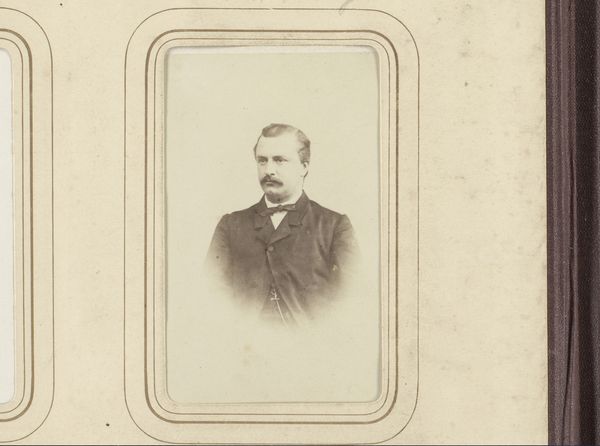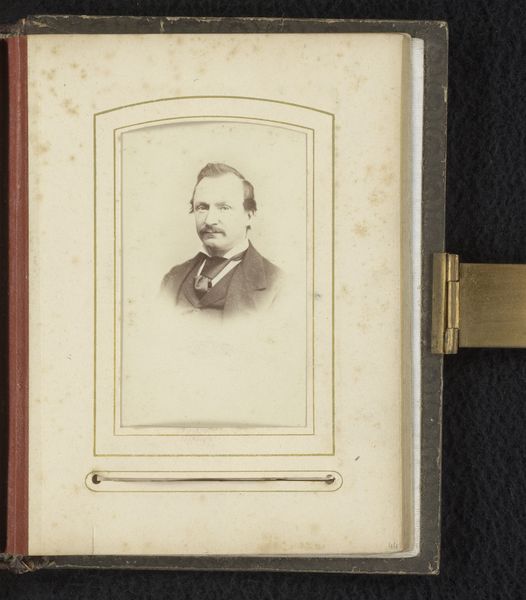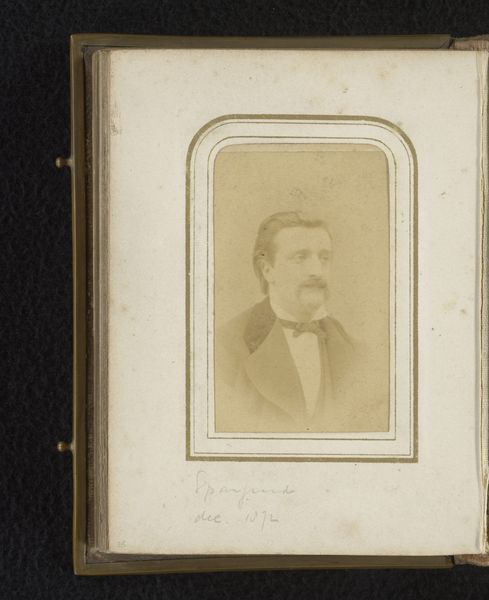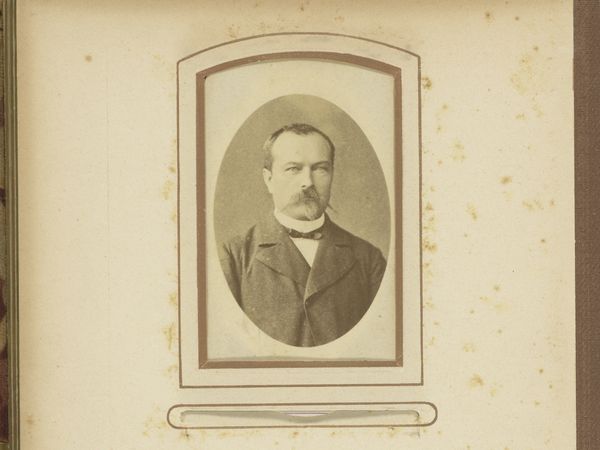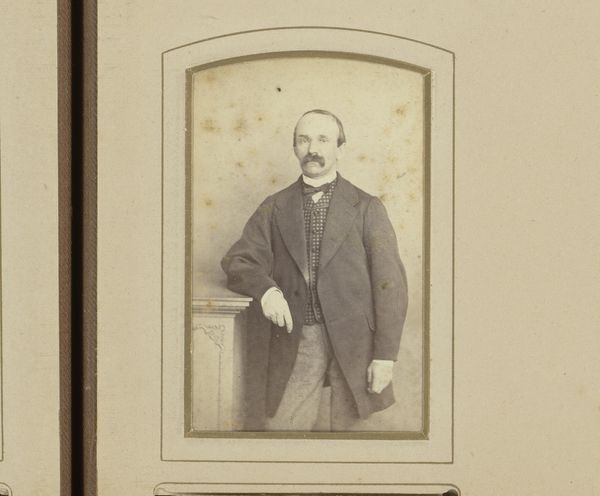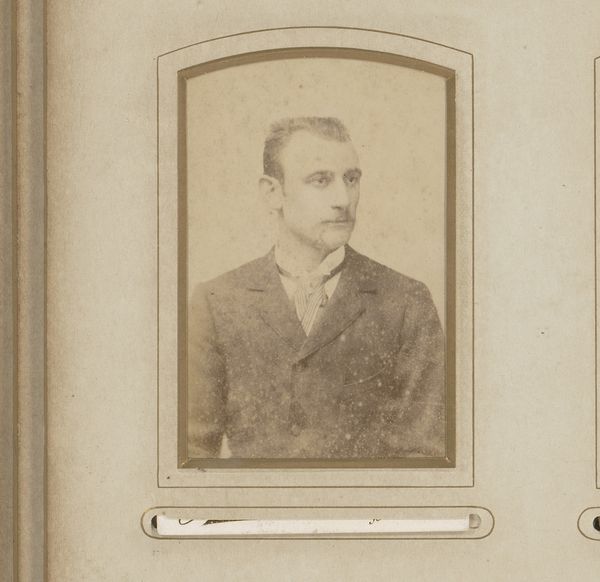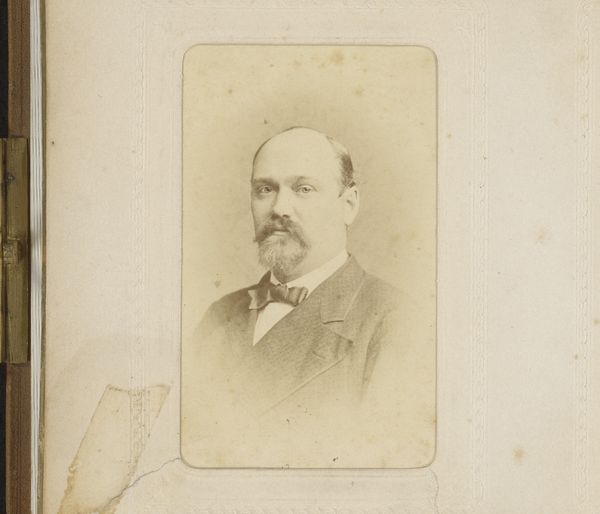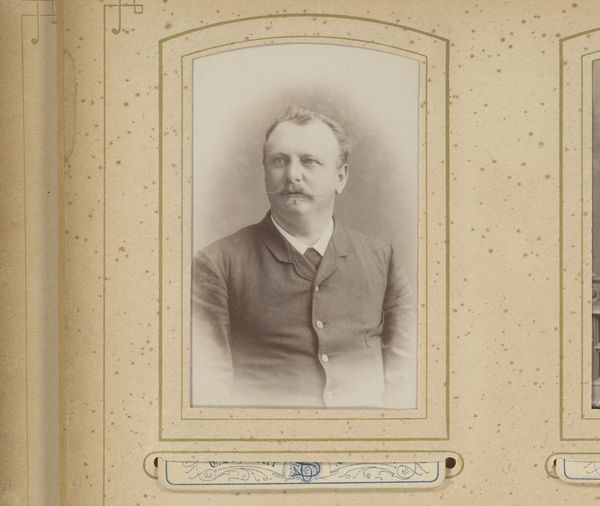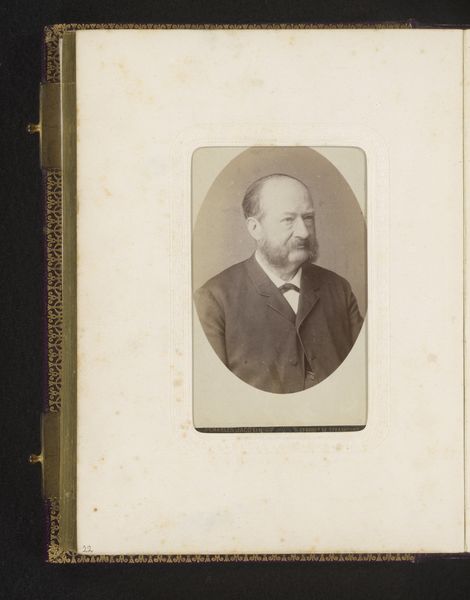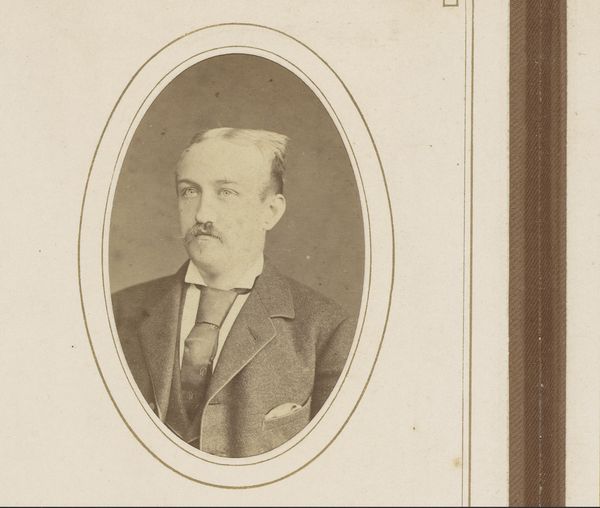
photography, gelatin-silver-print
#
portrait
#
self-portrait
#
charcoal drawing
#
photography
#
gelatin-silver-print
#
watercolor
#
realism
Dimensions: height 83 mm, width 51 mm
Copyright: Rijks Museum: Open Domain
Curator: I'm immediately drawn to the materiality of this object. We're looking at what appears to be a gelatin-silver print, presented in a bound format. "Portret van een man met snor," or "Portrait of a Man with a Moustache," dating from around 1860 to 1900, offers an interesting insight into photographic portraiture during this period. Editor: It certainly has a somber quality, doesn’t it? The tones are muted, lending the image a gravitas, and it’s not just the tones. He looks serious, almost stern, in his pose. It feels very posed and formal. I wonder what his story is. Curator: I agree. Think of the labour involved: creating the photographic chemicals, meticulously posing the sitter, printing and then painstakingly mounting this gelatin print within what is a beautifully crafted album page. It speaks to the value placed upon image making in representing status during this period. How were the sitter’s labor, class, or industry reflected, and consumed by society, after its making? Editor: Absolutely. Photography democratized portraiture, but also formalized it in its own way. Before, portraiture was largely confined to the elite. What strikes me is that these portraits often became displays of social standing and respectability. He is looking to his left, is wearing a respectable jacket with white dress shirt, all neatly presented. Curator: Precisely, this process, involving chemistry and printing, offered new possibilities. You can also look at the binding, too. Someone laboured to craft this as an album. The presentation reinforces how carefully constructed even relatively ‘common’ images could be in this time, from photographic process through to dissemination as valued item or display of social standing within familial settings. Editor: This era saw a flourishing market in these kinds of photographs and albums. Studios popped up everywhere catering to this new desire for personal mementos. We now understand, viewing at a remove of nearly two centuries, the construction of identity inherent within these displays. What was valued, deemed important, worthy of remembrance is reflected both in its composition and its creation. Curator: Right, the rise of the photographic portrait reflects shifting social norms. These images served to solidify social standing and perhaps memorialize family members, demonstrating new systems of capital tied into representations, and making methods. Editor: Indeed, this "Portrait of a Man with a Moustache" reminds us how intertwined art and societal forces were and remain, in shaping individual and collective identities. Curator: Looking at process, at production in these ways really enables the histories that can be written to be viewed at a different grain, as it were. Editor: It shows how photographic studios facilitated a new way for people to participate in public and personal historical narrative building, that could then inform how their social positions were understood by later generations.
Comments
No comments
Be the first to comment and join the conversation on the ultimate creative platform.

